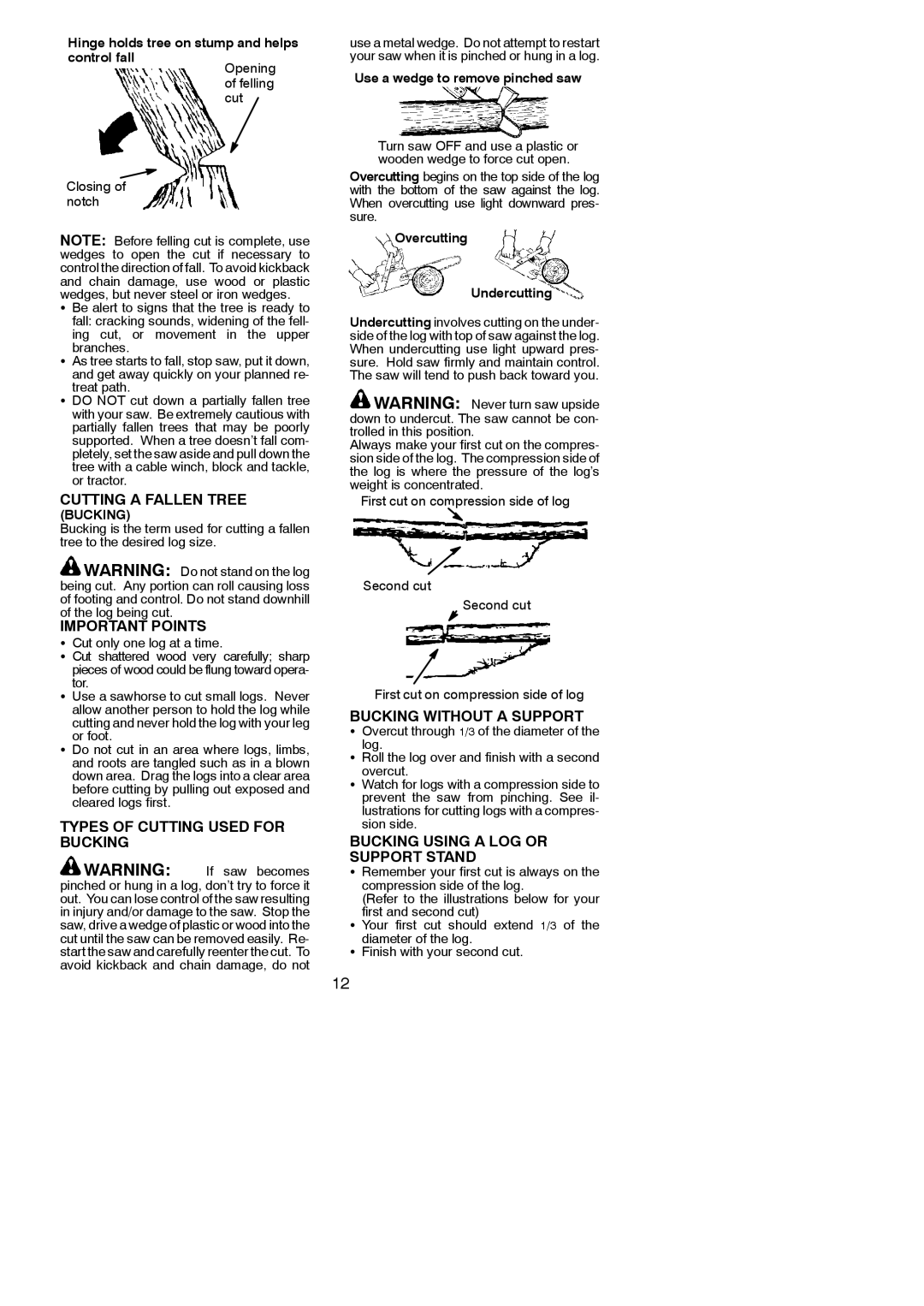222 specifications
The Poulan 222 is a versatile and powerful chain saw designed to meet the demands of both casual users and professionals alike. Renowned for its reliability and performance, the Poulan 222 is an excellent addition to the toolkits of landscapers, tree surgeons, and homeowners who require a dependable cutting tool for various tasks.One of the standout features of the Poulan 222 is its lightweight design. Weighing in at just under 11 pounds, this chain saw is easy to maneuver, allowing users to work for extended periods without excessive fatigue. The balanced weight distribution also contributes to stability during operation, enhancing precision cuts.
The Poulan 222 is powered by a robust 2-cycle engine, delivering exceptional cutting power for both light and heavy-duty applications. With a displacement of 45cc, this engine is capable of producing up to 2.0 horsepower, which means it can handle tough materials like hardwood with efficiency. This power is complemented by a quality chain bar, typically measuring 18 inches in length, providing the right length for a variety of cutting tasks.
One of the key technologies in the Poulan 222 is its Easy Start feature. This innovative system significantly reduces the amount of effort needed to pull the starter rope, making it easier to start the saw with less physical exertion. Additionally, the chain saw incorporates a primer bulb that ensures fuel reaches the engine quickly, further aiding in starting.
The Poulan 222 is designed with user safety and comfort in mind. It features an inertia-activated chain brake that helps prevent accidents in case of kickback, a common hazard when operating a chain saw. The ergonomic handle and anti-vibration technology contribute to a more comfortable grip, reducing strain during prolonged use.
Another noteworthy characteristic of the Poulan 222 is its fuel efficiency. The engine is designed to consume less fuel while providing high performance, leading to fewer stops for refueling and increased productivity during work sessions.
Overall, the Poulan 222 is a well-rounded chain saw that combines power, comfort, and advanced features. Whether tackling home improvement projects, maintaining a landscape, or executing professional tree work, the Poulan 222 stands out as a reliable and efficient tool. It represents a smart investment for anyone looking to enhance their cutting capabilities with a saw that delivers both power and precision.

